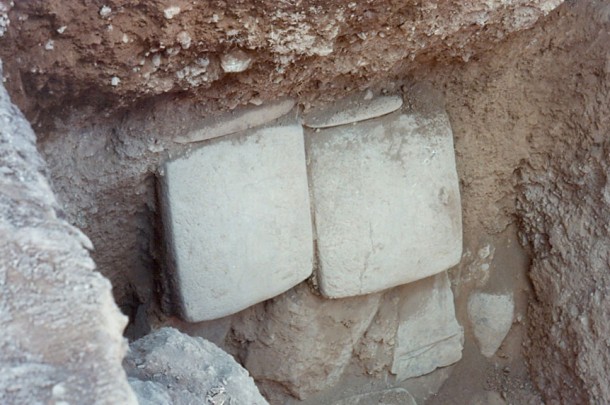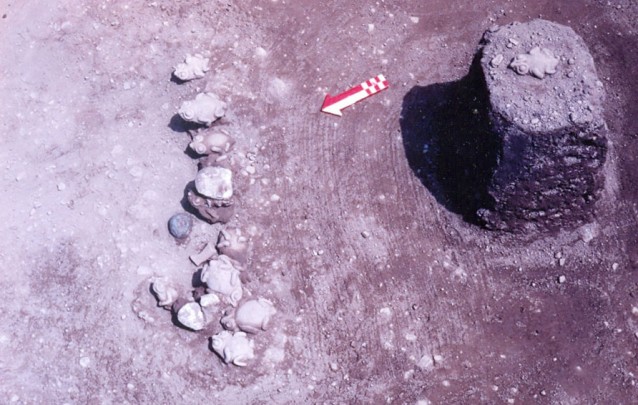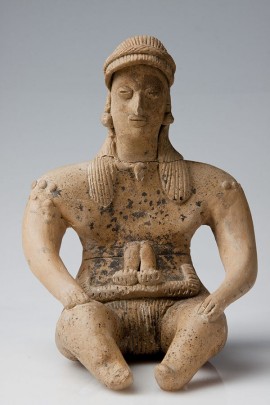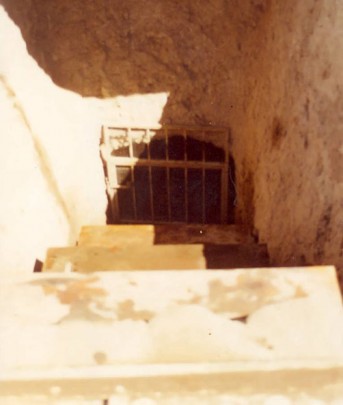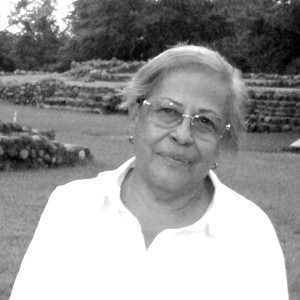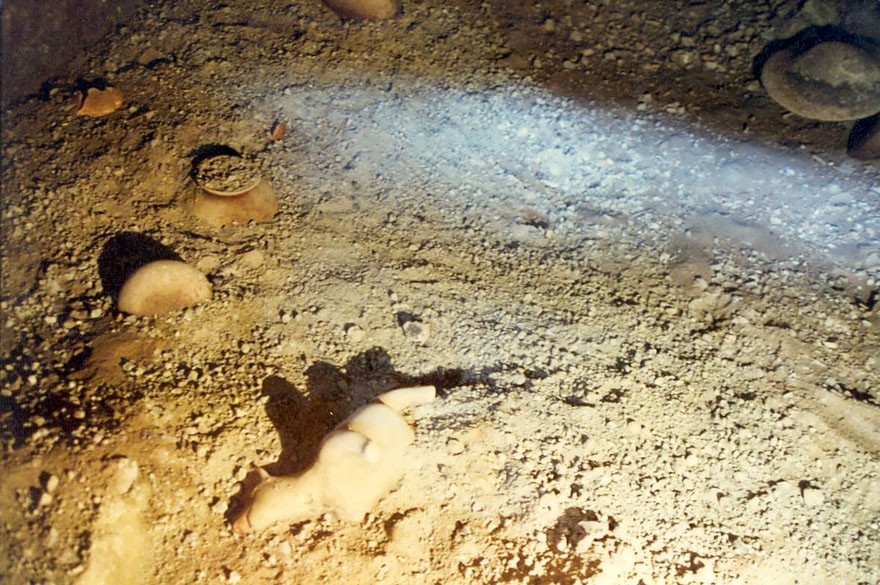There are many mythical signs expressed in the material remains of La Campana. Regarding the regional distribution of political power, we should mention the presence of a kind of Teotihuacan ambassador who was responsible for obtaining certain products, which were seemingly important for the people of Teotihuacan, and delivering them to the Central Plateau. Important ideas travelled with these dignitaries, influenced by their cosmogonic and cosmological principles, which then infiltrated the societies of Western Mesoamerica. This explains why there is a group of religious buildings in the ceremonial-administrative center that stood out due to the height and size of the structures. It is worth noting that the upper structures stand more than ten feet above the lower square, which was achieved using artificial infill.
One of the main enclosures of the ancient city is in the upper part of the complex. It is characterized by its dimensions and its rectangular design, which recalls La Ciudadela ("The Citadel") in Teotihuacan. This was a prototype for the large ceremonial enclosures that continue to be found up to the Postclassic period with the Huey Teocalli of Mexico-Tenochtitlan as an ancestral mythical manifestation of the design of the earth.
It also worth noting the presence of two avenues, built following the east-west and north-south axis. The first reflects an important aspect of Mesoamerican belief about the creation of the universe. That is to say, the rising of the sun in the east and its setting in the west according to the daily cycle. As for the north-south axis, it is associated with the worship of the god of fire. The Volcán de Fuego is located to the north of the ancient city, where the old supernatural spirit lives who was an object of worship. The inhabitants of La Campana created altars and miniature models using the image of the volcano.
Other expressions of Mesoamerican beliefs, although adapted to this settlement’s own identity, are associated with the worship of death as part of the fundamental natural cycle. This explains the presence of mortuary architecture such as shaft tombs and stepped passageway tombs, where remains of the dead were placed in accordance with their social position and importance. The buried people were differentiated from one another by the form of access, via cylindrical shafts or staggered stairways, while in other cases, the bodies are found in holes. This suggests a differentiation in the social stratification and it seems that this has no link to the different periods of cultural development in the region. Evidence also exists of the custom of burning cadavers, with the ashes placed on the walls of certain shafts.
Near Tomb 9 at La Campana, 15 clay models of toads were found, decorated with burnished red paint and arranged around a stone covered in blue pigment. This is a type of ritual which shows the link between these toads and water and fertility. This not only indicates the presence of the tomb, but also that the underworld was considered to be a place of both death and fertility. Furthermore, toads, related with the worship of water and, therefore, fertility, are mentioned in various myths as messengers from the gods, especially the water deity.
When exploring the site, a staircase was discovered which was framed by lateral stone walls covered with mud stucco. On the steps, fragments of human remains and anthropomorphic figurines were found, some of which could be restored. At the end of the stairway, a rectangular entrance was found which was worked into the brittle volcanic rock and covered with metates (grinding stones), metlapillis (cylindrical, hand-held grinding stones) and ordinary stones.
Upon removing the stones and the metates which protected the tomb’s entrance, a sculpture of a female dog was found, who seemed to be guarding the entrance. Due to the presence of offerings and remains of bones inside, it was possible to determine that this space was indeed a tomb, in which these ceramic objects had been placed as offerings.
Of note were various pots painted red and brown, some of which contained food and water or another liquid. Sculptures associated with Mesoamerican myth were also found, specifically the myth of the creation of man. Quetzalcoatl descended into the underworld, in the form of his twin Xolotl (a dog) to steal the precious bones which were found in the center of the earth inside the Dominion of Miclantecuhtli and Mictecacihuatl. Once the witch Quilaztli had grinded them together with the semen of the supernatural spirt, Quetzalcoatl drank the mixture and created man.
Other clay sculptures were discovered, such as the dual image of the spiritual creator spirit par excellence at the moment when he poured his sacred liquid onto the powdered bones to give them life. Two broken skulls were also found which had been covered by two mortuary masks which are different to other Mesoamerican masks. They are long and have stitched mouths to prevent them from speaking. This identified the dead, known as “the mutes.”
In Mesoamerica, there used to be a tradition of covering the faces of important people who had died in order to give them an eternal face which would hide natural decomposition over time. The god Quetzalcoatl himself in his manifestation as the priest Tula wore a mask to cover traces of aging.


